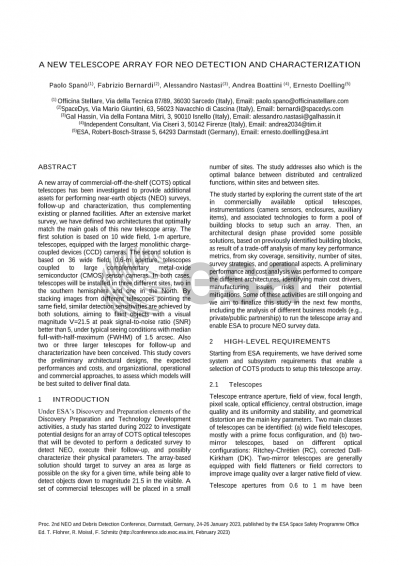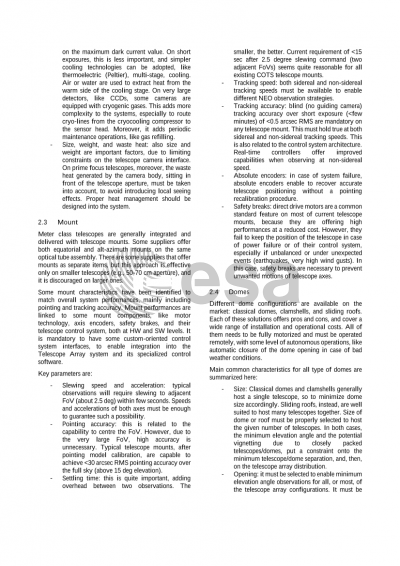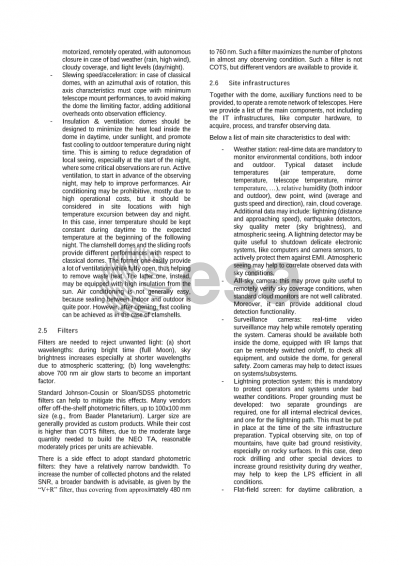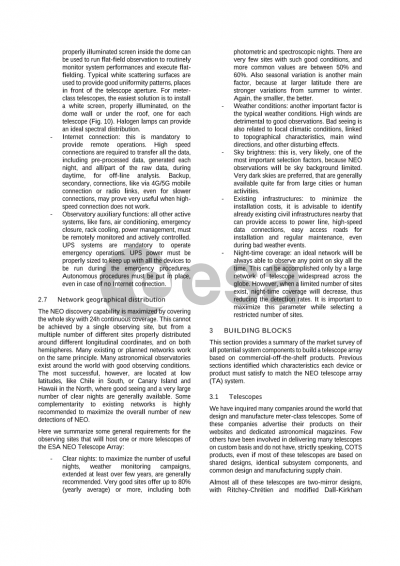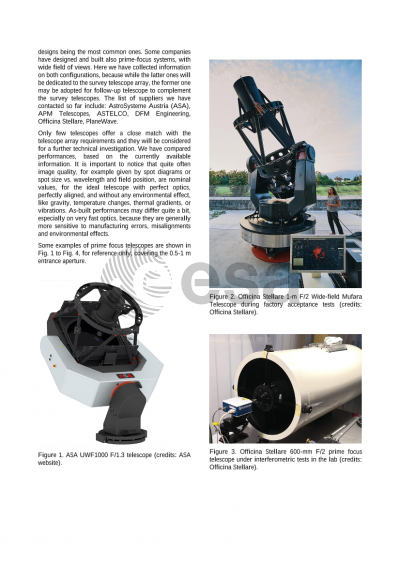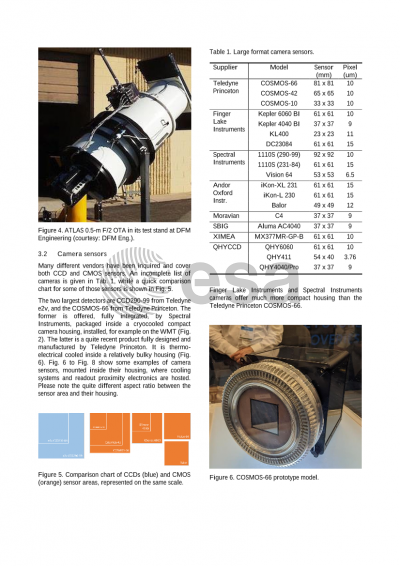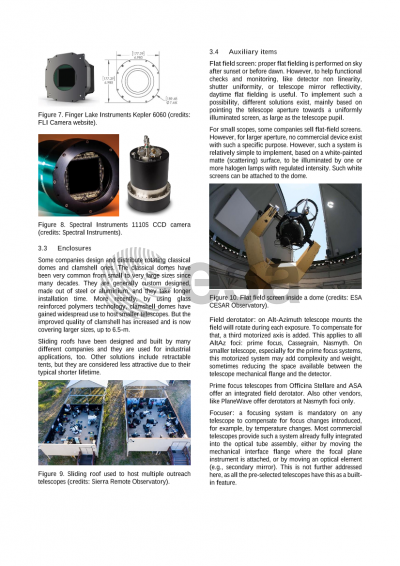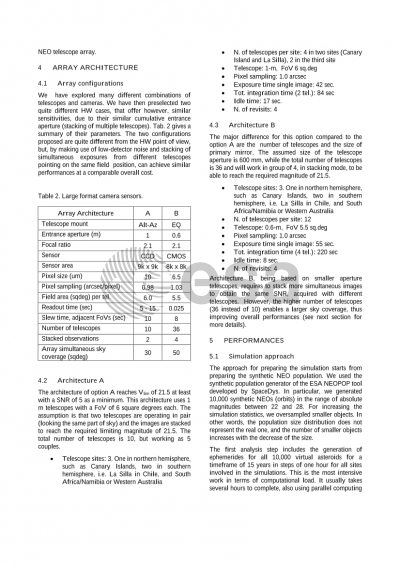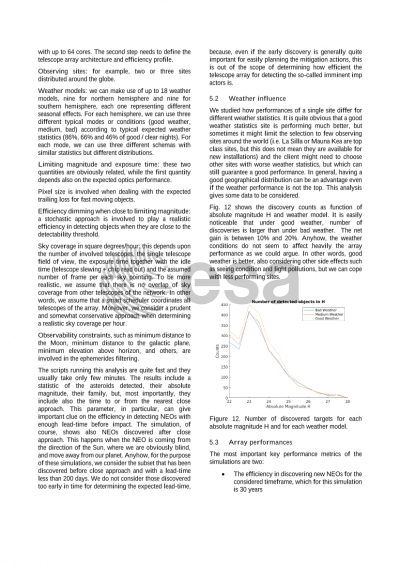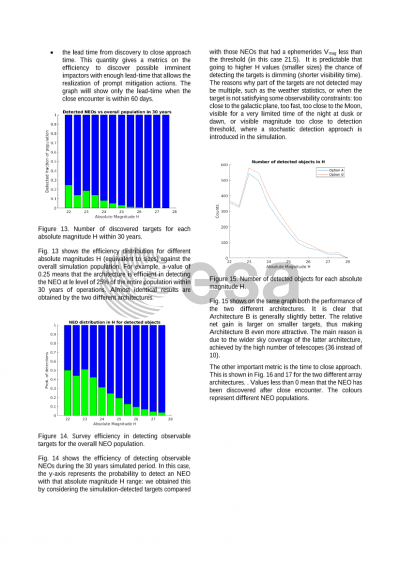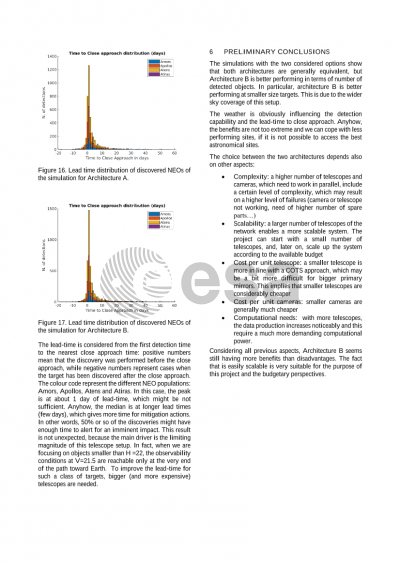Document details

Abstract
Officina Stellare, SpaceDys and Gal Hassin have run a study under ESA contract to set up a new array of COTS optical telescopes to provide additional assets for performing NEO surveys, follow-up and characterization. They will complement current facilities, like the two Test-Bed robotic Telescopes and the first Fly-Eye Telescope. Starting from an extensive market survey, covering all major components, like telescopes, imaging cameras, domes, and other auxiliary equipment, we have defined some potential architectures that optimally match the main goals of this new telescope array. This telescope array will likely be done with 10-20 wide field meter-class telescopes equipped with large area detectors, mainly devoted to the detection of new NEOs down to magnitude V=21.5, and two larger telescopes for follow-up and characterization. All the different architectures have been rated in terms of observing performances, like overall sky coverage, detection sensitivity, and lead time from discovery to close approach, as function of absolute H magnitude. A cost analysis has been carried out, trying to optimize performances for a given cost cap. Also organizational, operational and commercial approaches have been addressed, to assess which models will be best suited to deliver final data.
Preview
